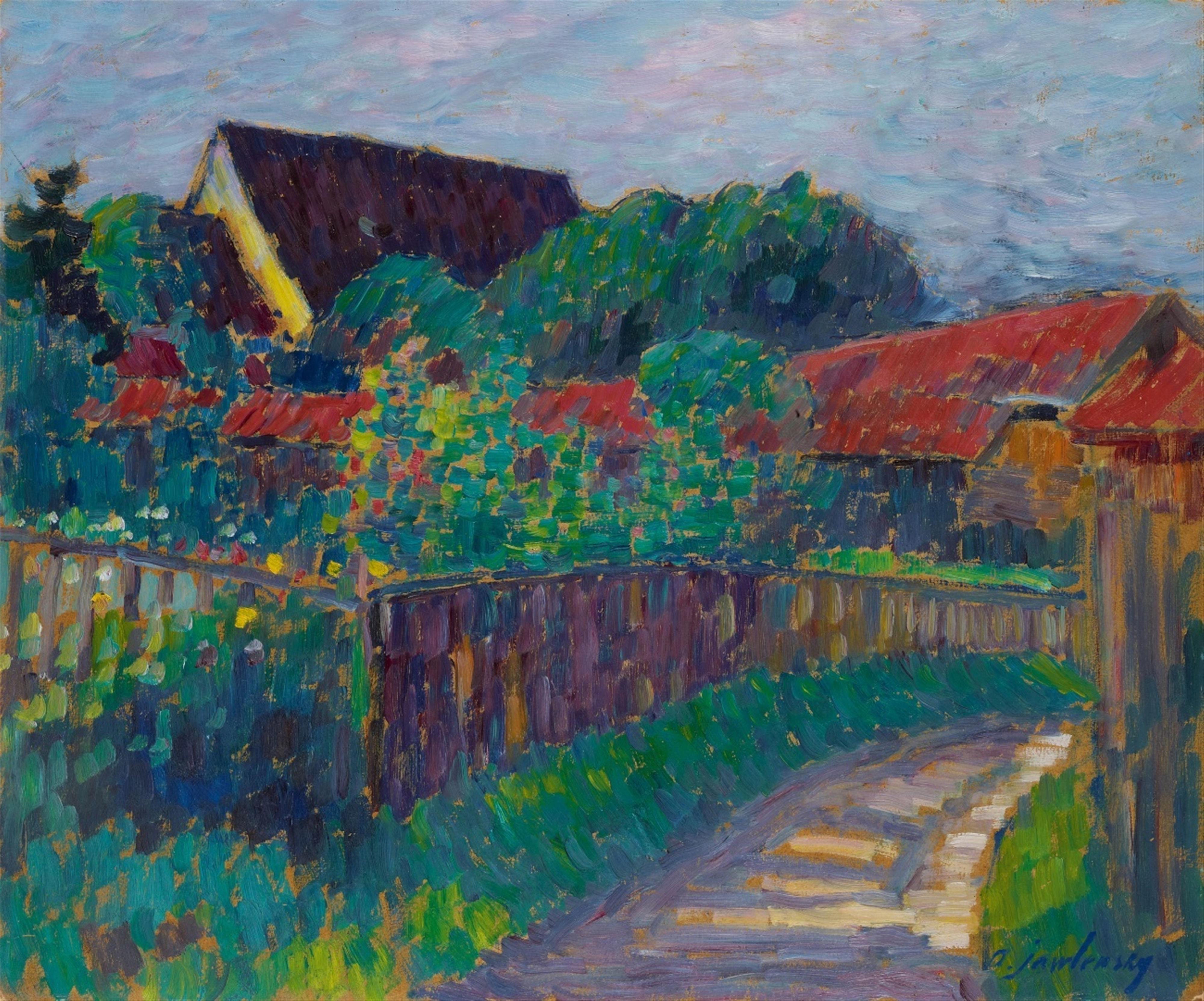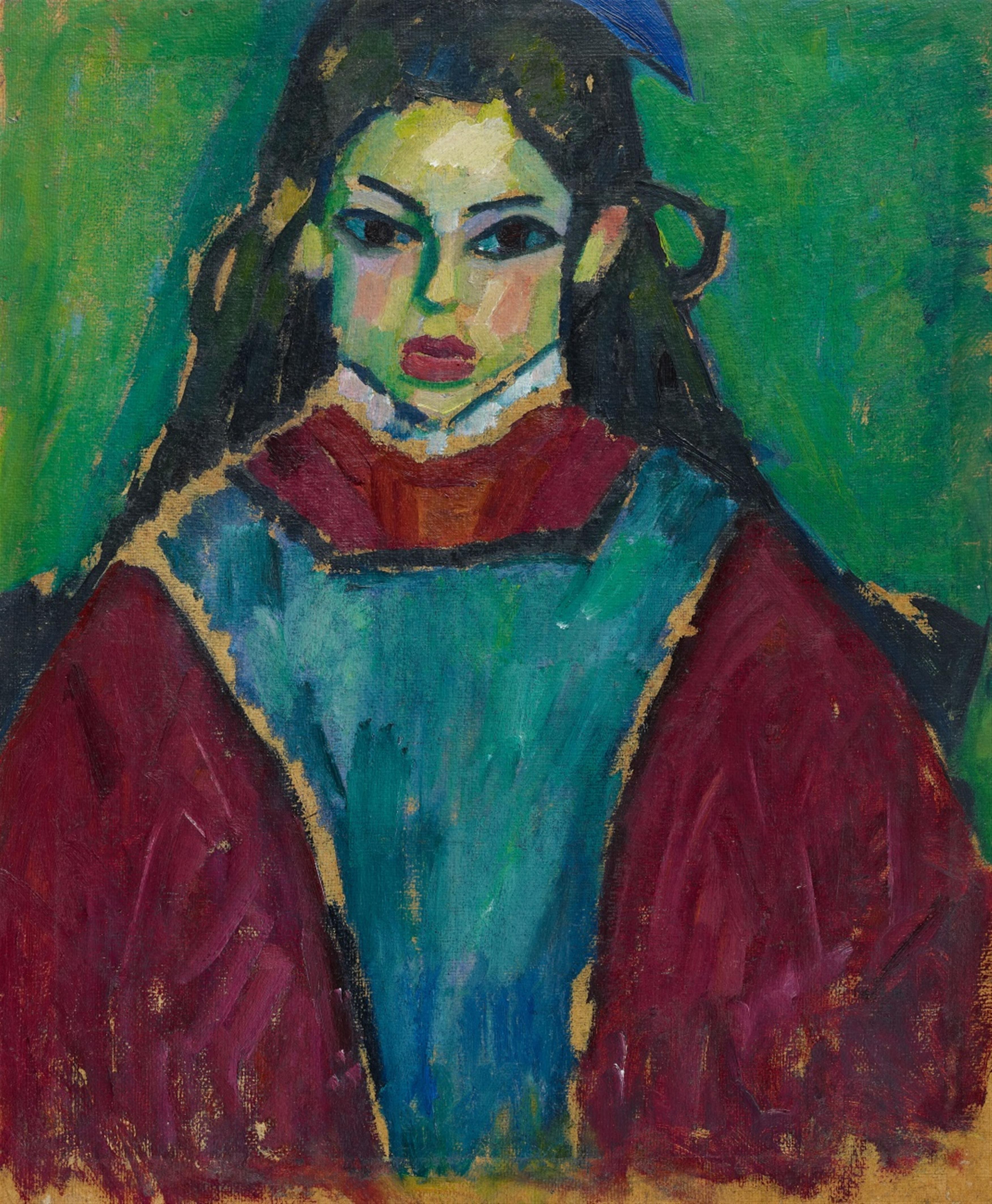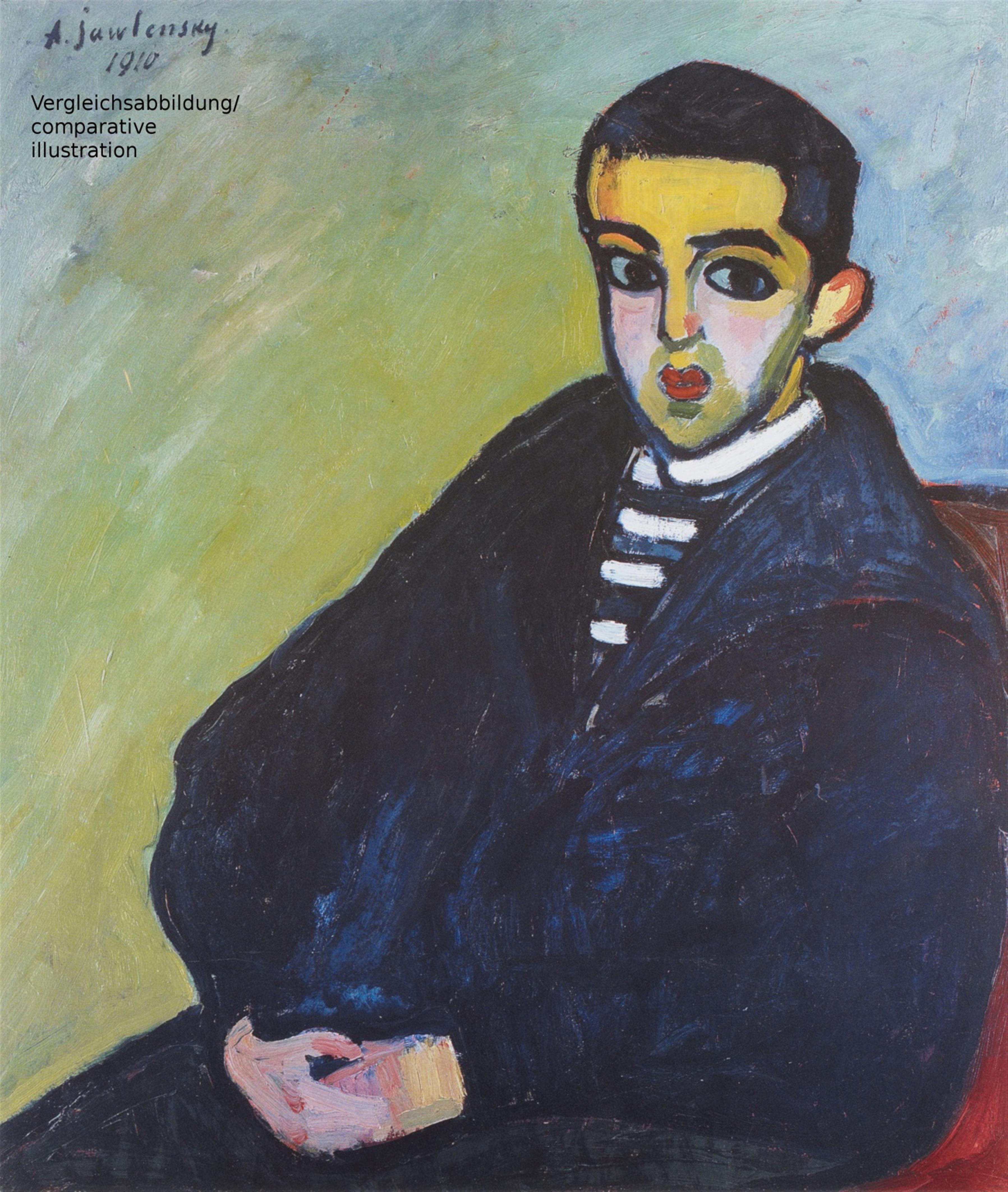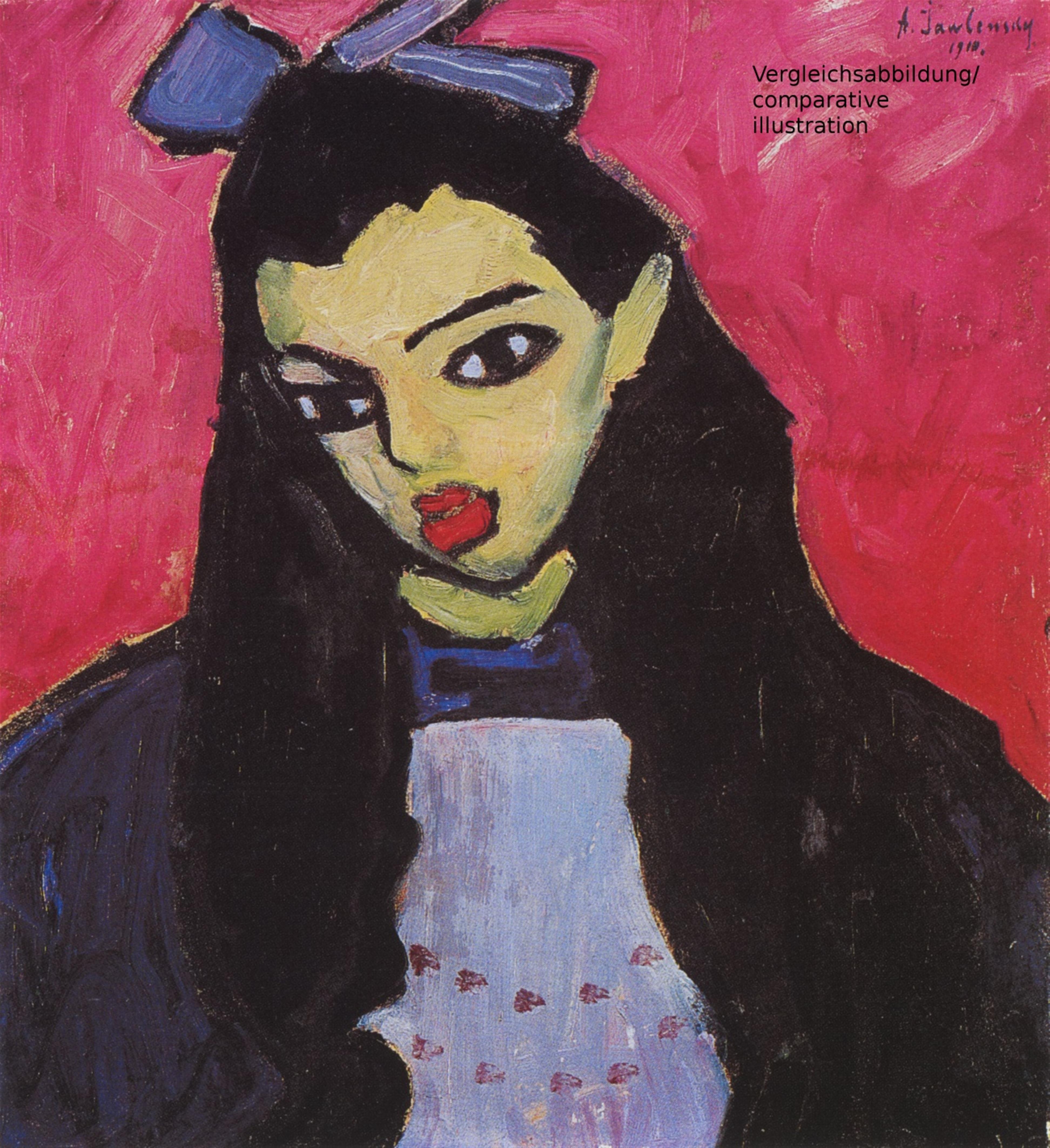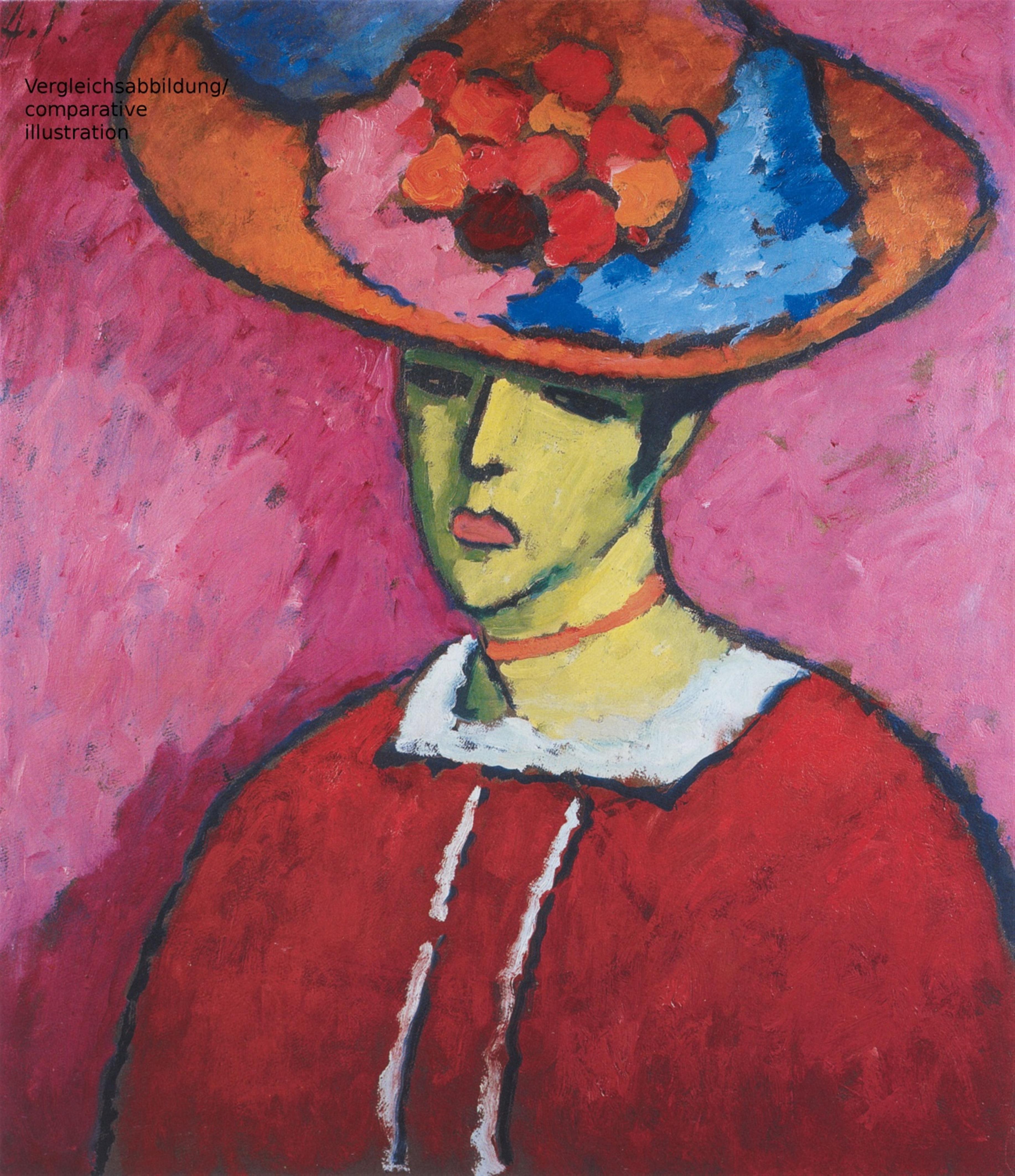Alexej von Jawlensky
Garten am Bauernhaus. Verso: Mädchenbildnis
Circa 1907 and circa 1910 resp.
Oil on card, painted on both sides, verso as portrait format 53.5 x 64.5 cm and 64.5 x 53.5 cm resp. Framed. Signed on recto 'A. Jawlensky' in blue lower right. - In good, well-kept condition. - The portrait of a girl was formerly overpainted, excluding a 5 cm margin, it was uncovered professionally by the previous owner; with professional, primarily dotted, retouchings in places.
The early, intensely coloured landscapes from Wasserburg/ Inn date from 1906/1907 and form a small, distinct group of works within Jawlensky's oeuvre. The present painting was presumably created in or near Wasserburg and depicts a path in front of a farmer's fenced garden, the buildings and sheds of the farm with their red roofs cowering in the middle ground in the midst of the abundant green vegetation. At this point in time the artist was very intensively occupied with contemporary French painting: we can directly feel him opening himself up as an artist to new directions as diverse as Post-Impressionism and Fauvism, to Vincent van Gogh and to Paul Cézanne. We now recognise this in the landscape theme as well - in the specific selection of luminous colours, in their combination, in the loose but directional, rhythmic brushstroke and in the constructed and planar compositional structure. The visual experiences that Jawlensky gathered were exciting and formative, and they remained artistic challenges that he very quickly took up and liberally adopted. The artist's stays in Wasserburg probably date from the spring of 1906, however, they are documented primarily for the summer of 1907 (cf. Angelica Jawlensky Bianconi, Alexej von Jawlensky, Momente eines gelebten Lebens,1864 bis 1914, in: exhib. cat. Horizont Jawlensky, 1900 - 1914, Alexej von Jawlensky im Spiegel seiner künstlerischen Begegnungen, Wiesbaden 2014, p. 289). In terms of their motives, the Wasserburg paintings typically represent simple and unspectacular elements of the rural topography: fields, chains of hills and - as in this case - a rural homestead between paths and groups of trees. However - much as in the case of Pissarro or Cézanne - the formal structure of the painting, the pictorial architecture and the distribution of colour, takes on a new significance beyond the chosen motif and the detail selected from nature.
The reverse side, which has been uncovered and features a spectacular portrait of a girl, was created somewhat later and exhibits Jawlensky's mature, individual style that was to reach its culmination in the years 1911/1912. Clemens Weiler has succinctly summarised the artist's development up to that point: “The intensity of colour glowing inside of him had to create a new form for itself. And so he subdued colour through an even more rigorous form. In his old age, he named one of his mediations 'Verhaltene Glut' (Restrained Glow). That was his aim: to tame the glowing colour, not to let it flow, not to permit it to run free. That was his temperament, but perhaps also the fruit of his soldierly upbringing and the legacy of his noble ancestors.” (Clemens Weiler, Alexej Jawlensky, Cologne 1959, p. 74) Jawlensky's painting takes on a decidedly abstract element and he achieves images of an entirely new sort, spontaneous and direct in their conception. Colour and form are brought together and juxtaposed two-dimensionally in the well-known “synthèse”. A strong element is formed by the black utilised - often in the form of a defining contour. It intensifies the effect of the colours and their distinctive “glow” as described by Weiler. The present expressive portrait of a girl is to be grouped with the works of 1910. To name only a few examples, it is stylistically comparable to the painted masterpieces “Nikita” (Museum Wiesbaden) and “Schokko” and also to the portrait “Mädchen mit schwarzem Haar”, which seems to display a physiognomic resemblance to the present “Mädchenbildnis” (cf. M. Jawlensky/ Pieroni-Jawlensky, A. Jawlensky 308, 318, 327). Jawlensky's strongest portraits are characterised by the pyramidal structure that we also find here. The red dress of the child and her greenish pinafore form an almost pedestal-like area that makes up well over half of the painting's surface. The highly expressive head along with the bow, placed on top of it, is obviously cut above at the edge. However, the motif is scarcely constrained by this seemingly arbitrary detail, because the strict frontality of the figure and the gaze of the girl are of such artistic and expressive force that, in viewing the work, we are entirely captivated and are sure to stand by again and again, perfectly mesmerised.
Catalogue Raisonné
163 A with colour illus p. 152 (Farmhouse garden)
Certificate
We would like to thank Angelica Jawlensky Bianconi, Alexej von Jawlensky-Archive, Locarno, for kind additional information.
Provenance
Private Collection, Rhineland; in family possession since

